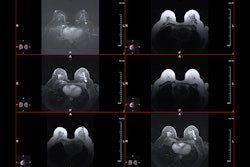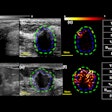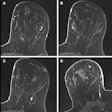Women living in racially and economically segregated neighborhoods in New York City are more likely to be diagnosed with advanced-stage breast and cervical cancer, American Cancer Society (ACS) researchers have reported.
The group also studied colorectal cancer but did not find any similar disparities, said lead author Qinran Liu, PhD, of the ACS, in a statement. The results were published July 24 in the Journal of the National Cancer Institute.
"Our research shows that structural barriers in segregated neighborhoods continue to delay diagnosis for breast and cervical cancers -- even among individuals eligible for screening," Liu noted. "But there is positive news. We found no disparities in stage at diagnosis for colorectal cancer. This may in part reflect the impact of local equity-focused initiatives for early detection of colorectal cancer in New York City. However, the results for colorectal cancer may not be applicable to other areas, especially those without such early detection initiatives."
Stage at diagnosis is a critical determinant of cancer survival and long-term outcomes, Liu and colleagues explained, noting that "despite advances in early detection, minoritized racial and ethnic populations are more likely to be diagnosed with advanced-stage cancers than the non-Hispanic white population."
To assess links between race and socioeconomic status and cancer stage, the team conducted a study that included census-tract data of almost 100,000 cancer cases from New York State Cancer Registry data (2008 to 2019). The data consisted of 58,970 diagnosed cases of breast cancer, 4,790 of cervical cancer, and 34,689 of colorectal cancer. Each cancer case was assigned a "neighborhood segregation score" that captured both racial and economic factors.
The main finding was that "advanced-to-localized stage incidence-rate ratios were significantly higher in areas that were both economically deprived and racially concentrated (either non-Hispanic Black or Hispanic) compared to the most affluent and non-Hispanic, white-concentrated areas for breast and cervical cancer," the team reported.
Advanced-to-localized breast cancer stage incidence-rate ratios by race | |||
Type of cancer | Non-Hispanic white | Hispanic | Non-Hispanic Black |
| Breast cancer | 33.3% | 37.3% | 43.1% |
| Cervical cancer | 47.5% | 50.1% | 60.3% |
| Colorectal cancer | 57.4% | 57.5% | 57% |
The results have "direct implications for cancer prevention and early detection efforts by identifying neighborhoods with the greatest disparities in stage at diagnosis," according to Liu.
"This information can inform targeted resource allocation and guide interventions such as patient navigation services and investments in healthcare infrastructure -- strategies that can facilitate earlier diagnosis with the goal of improving outcomes," she said.
The complete study can be found here.




















